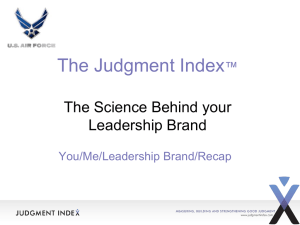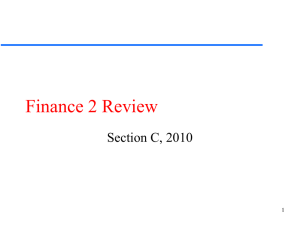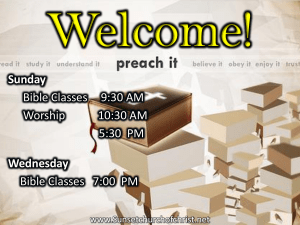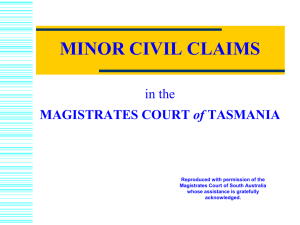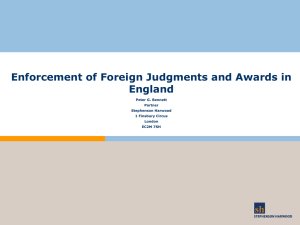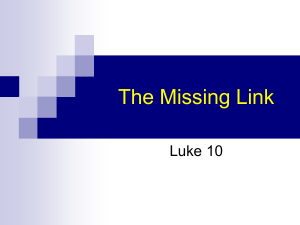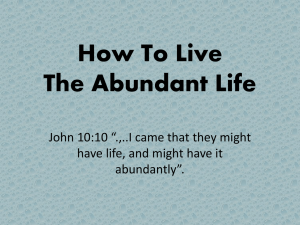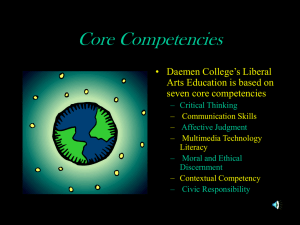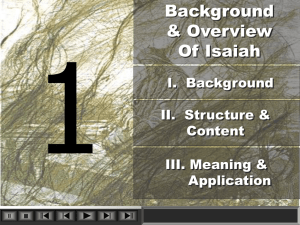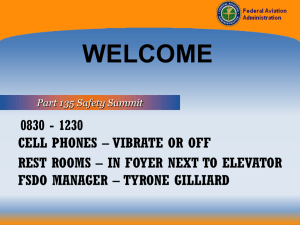Slide 0 - American Accounting Association
advertisement
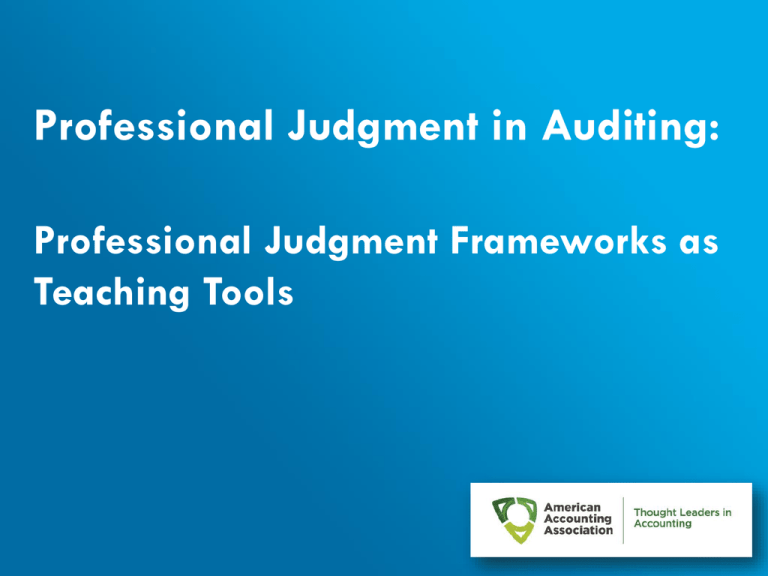
Professional Judgment in Auditing: Professional Judgment Frameworks as Teaching Tools John D. Keyser National Director of Assurance Services McGladrey LLP Douglas F. Prawitt Glen Ardis Professor of Accountancy Brigham Young University Jason L. Smith (Moderator) Associate Professor of Accounting University of Nevada, Las Vegas Agenda Topic Time Introduction to two Frameworks: KPMG, McGladrey 20 minutes What is happening in the Profession 15 minutes Integrating Professional Judgment into the Classroom 15 minutes Q&A 10 minutes Why focus on Professional Judgment? Increased emphasis on judgment in accounting & auditing Principles-based accounting and auditing standards Movement toward fair value accounting Etc. Increased importance of ability to exercise effective professional judgment, professional skepticism Professional Judgment: What it looks like, and common threats The KPMG Professional Judgment Framework The KPMG Professional Judgment Framework 6 Steps in the judgment process 7 Polling Question 1 (CPE Credit) Within an auditing context, what is professional judgment? a) Professional judgment is the process of using relevant training, knowledge, and experience to reach a decision or draw a conclusion in evaluating evidence, estimating probabilities, or selecting between options. b) Professional judgment is professional skepticism, which is an attitude that includes a questioning mind and a critical assessment of audit evidence. c) Professional judgment is the application of one’s experience to make a judgment in the absence of supporting evidence, based on the facts and circumstances of the audit engagement. d) Professional judgment is the construction of a logical justification to support an outcome or conclusion that is otherwise not supported by the available evidence. The McGladrey Professional Judgment Framework McGladrey Professional Judgment Framework Steps in McGladrey Judgment Process Step 1 - Frame the Issue Consider other perspectives and the implications of those views: Regulator, manager, user Error vs. fraud Owner, lender, investor, legal, insurer, customer, audit committee How might a judgment look in the future with the benefit of hindsight, assuming various outcomes? 12 Steps in McGladrey Judgment Process Step 2 - Determine Objectives Determine Objectives: What is wanted or needed? Ask how you would justify a judgment or decision Are you comfortable at a gut level moving ahead with a judgment process? 14 Step 2 - Identify Alternatives A decision or judgment can only be as good as the best alternative considered Common Pitfalls: Consider only typical or first alternative that comes to mind Do the same thing as prior year Decision “triggers”—an alternative masquerading as a problem or “issue” to be solved Steps in McGladrey Judgment Process Steps in McGladrey Judgment Process Steps in McGladrey Judgment Process Fundamental Elements of Professional Judgment Framework Apply Relevant Knowledge and Learn from Experience Professional knowledge is brought to bear and reflection on experiences allows for enhanced professional judgment going forward Professional Skepticism As depicted the judgment process is performed with a mindset characterized by professional skepticism Potential Frames Judgments are informed through explicit consideration of different perspectives or “frames” Polling Question 2 (CPE Credit) Which of the following statements about judgment frames is correct? a) A situation cannot have more than one appropriate frame. b) There is often no single best frame for a given situation. c) Frames are not used by risk averse individuals. d) Professionals should eliminate the use of frames from their judgment processes. Judgment Biases Factors Affecting Judgment • Time pressure • Limited resources • Client, regulatory, industry • Limitations due to judgment “frames” • Judgment short-cuts • Bias caused by self interest • Judgment traps • Rush to “solve” Reality - Descriptive Bounded Rationality Lack important information Time and cost constraints Limited memory capacity Limitations on intelligence and perceptions What we do: Systematic shortcuts System 1 (quick) and Satisfice Heuristics We use simplifying judgment strategies. Rules of thumb developed over time because of our bounded rationality. Example crossing the street in New York… Paradox Our minds routinely solve problems too difficult for the mightiest computers, but we also make errors in the simplest of judgments about everyday events Judgment Tendencies Overconfidence: Tendency to be overconfident in our judgment abilities Availability: Tendency to judge likelihood of events by how readily available specific examples are in our memory Anchoring: Tendency to insufficiently adjust away from an initial anchor Confirmation: Tendency to seek and overweight confirming evidence 26 A Pervasive Judgment Tendency… Overconfidence Bias Most of us are overconfident in our judgment abilities and do not acknowledge the actual level of uncertainty that exists. Overconfident Experts “Heavier-than-air flying machines are impossible” “They couldn’t hit an elephant at this dist…” What’s So Bad About Overconfidence? Overconfidence Can Lead To: Taking on too many projects Over promising on deadlines Considering only one alternative Truncating information search or even skipping evidence gathering Snap judgments Avoidance or poor execution of judgment model 29 Confirmation Tendency We tend to have preferences We tend to seek confirming evidence We give confirming evidence greater weight than disconfirming evidence We often cannot know something to be true without checking to see how it might be false 30 What is Happening in the Profession with Respect to Enhancement of Professional Judgment? Goals of McGladrey Professional Judgment Initiative Shared frame of reference, common vocabulary Enhance the ability of audit professionals to consistently exercise quality judgment Enhance on-the-job training/coaching during engagements Build confidence to exercise professional judgment effectively and efficiently McGladrey Training Timing Course Name Audience Summer 2012 Introduction to the Framework Partners, Managers, Incharges Fall 2012 Professional Judgment in the Trenches All Spring 2013 Professional Judgment Self-study New hires and those needing refresher Summer 2013 Fraud and the McGladrey PJF Partners, Managers, Incharges Analytical Procedures In-charges Summer 2014 Auditing Accounting Estimates under the McGladrey PJF Partners, managers, incharges Ongoing Infuse into all courses Various McGladrey – Other Efforts Consultation forms Practice aids Interoffice inspection CAQ Working Group Member firms participate Professional Judgment Thought Leadership Description of a judgment process Discussion of common traps and biases Polling Question 3 (CPE Credit) The confirmation bias is a subconscious tendency to do which of the following? a) Seek evidence that confirms a biased judgment b) Seek evidence that confirms a previously held view c) Underutilize confirmations in the testing of accounts receivable d) Seek evidence that disconfirms a previously held view Integrating Professional Judgment into the Classroom: Can Accounting Students Learn Professional Judgment in the Classroom? Can You Really Teach Good Judgment? Is it a natural ability or a skill that can be developed? True or False: Either you have it or you do not… Good News! It is a skill that can be learned and developed It helps to know what “good judgment” looks like and the common threats to good judgment The sooner you start learning how to make good professional judgments, the better! 38 Factors in Developing the Ability to Exercise Good Professional Judgment Do you agree the following factors contribute to the development of good judgment? Natural ability Personal experience Observing others including mentors Self-studies/books AND… Formal training 39 How does a visual illusion relate to judgment? Source: http://www.michaelbach.de/ot/sze_shepardTables/index.html 40 GRAPHIC OF GOLF SWING The KPMG Professional Judgment Framework 42 Practice makes permanent Phil Mickelson Golf Swing 43 Threats to good judgment Not following a good process Judgment “traps” and “biases” Mental shortcuts Help simplify a complex situation Can facilitate more efficient judgments USUALLY effective 44 The purpose and benefits of the topic Mindset, skills, and techniques behind good judgment begin to form at a young age Training, deliberate practice, and experience can improve judgment It is important for students to have a solid foundation in good judgment 45 How does awareness help with this illusion? Source: http://www.michaelbach.de/ot/mot_mib/index.html 46 KPMG Professional Judgment Framework Monograph audit Elevating Professional Judgment in Auditing and Accounting: The KPMG Professional Judgment Framework kpmg.com McGladrey Monograph Polling Question 4 (CPE Credit) You just cannot teach professional judgment; either you have it or you do not. a) True b) False Q&A
